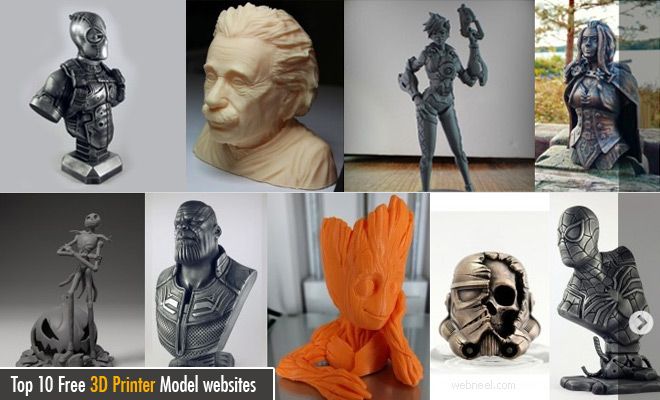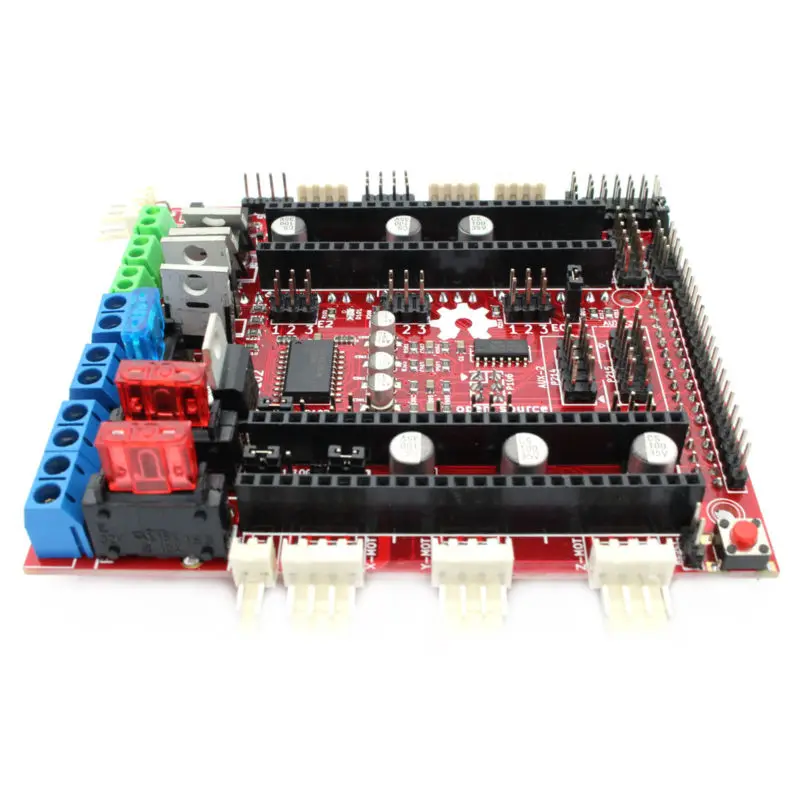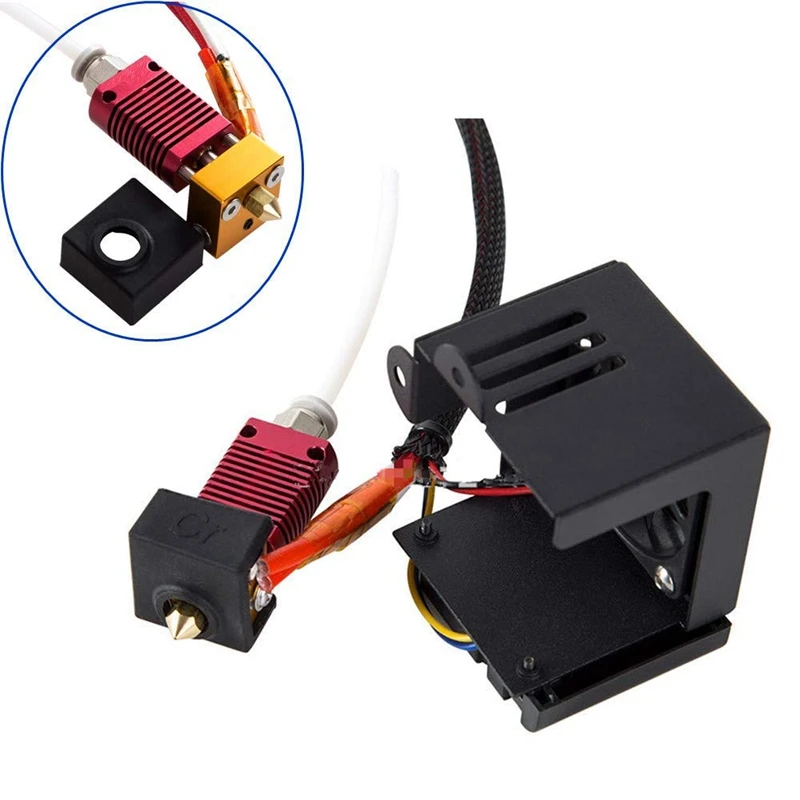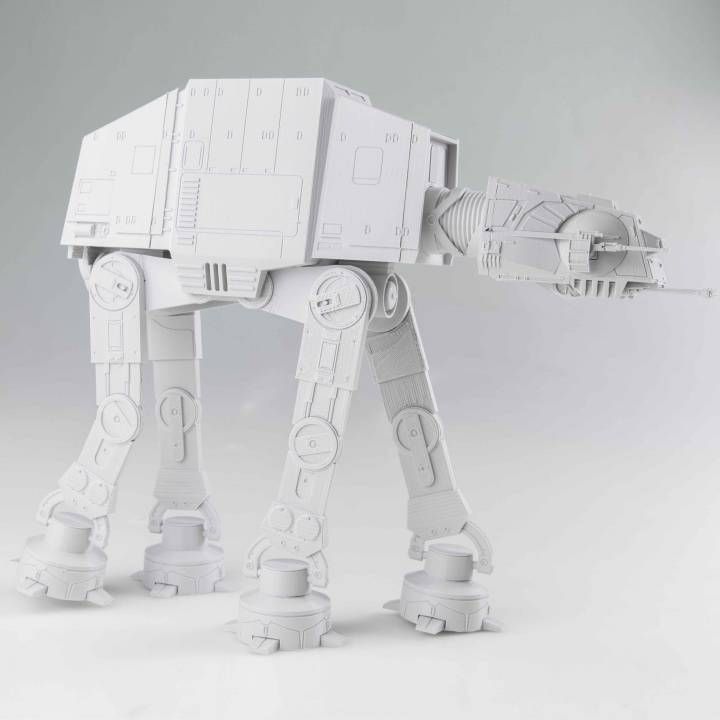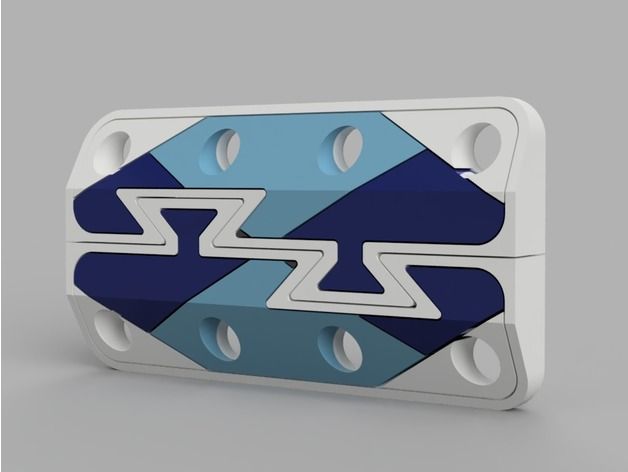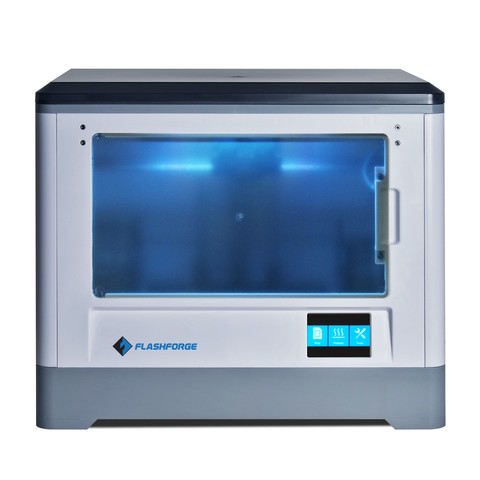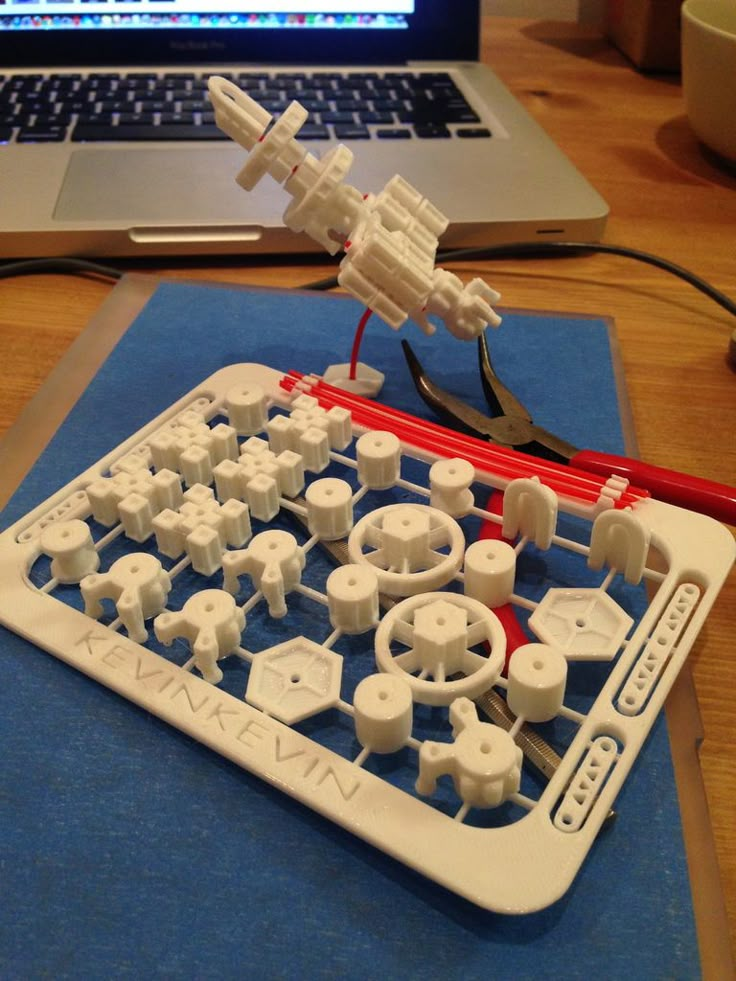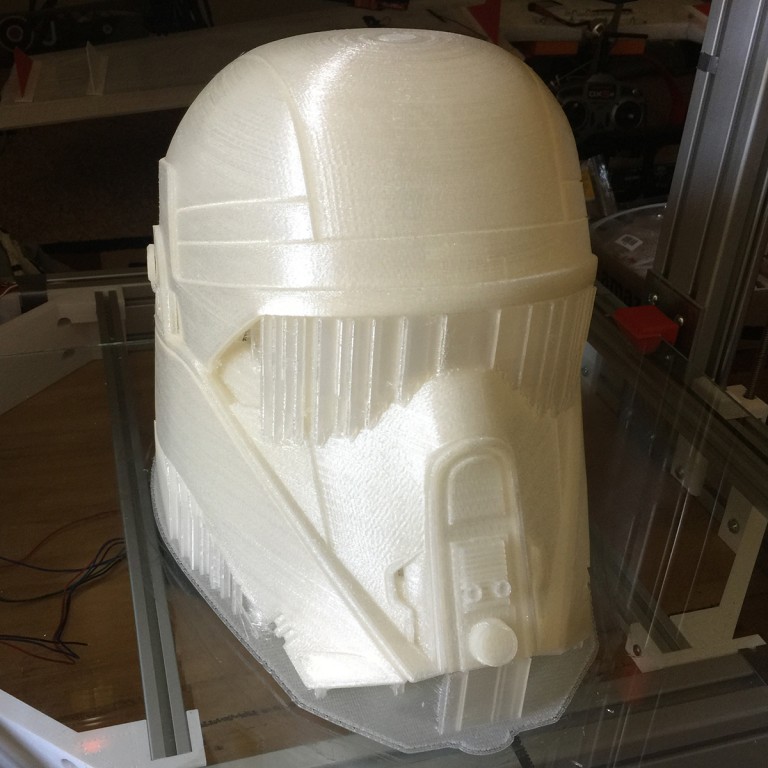Best paint for 3d printed models
What Kind of Paint to Use for Painting 3D Prints
by Valentin
This article contains affiliate links.
3D printing is an amazing technology that becomes more and more accessible to hobbyists. So you probably already finished your first few 3D prints and now you want to paint them but you are wondering what kind of paint to use for the job. In this article, I will tell you exactly what you have to watch out for and what kind of paint is best for painting 3D prints.
As a whole, acrylic, oil, and enamel paint can all be used to paint 3D prints. For beginners, the best paint to use is acrylic paint because it is easy to use and quite cheap. It is highly recommended to apply a primer on the 3D print before painting it regardless of the paint used.
I personally almost always use acrylic paints for painting my 3D prints. My favorite acrylic paint is from Vallejo but you can use any decent acrylic paint that you like.
You can see how I usually paint my 3D printed Sculpture right here in this video.
If you want to know how to properly paint 3D prints in detail then consider reading my guide on how to paint 3D prints or my guide on how to paint plastic. Or keep on reading if you want to know more about choosing the right paint for painting your 3D prints.
Can Every 3D Printed Object be Painted?
This is a very general question that I still get asked quite frequently so I will try and answer it as best as I can.
Every 3D printed object can be painted as long as no industrial style 3D printer that prints metal. Even prints that were printed with special filament like wood or glow in the dark filament can be painted as long as the prints are being prepared by applying a primer first.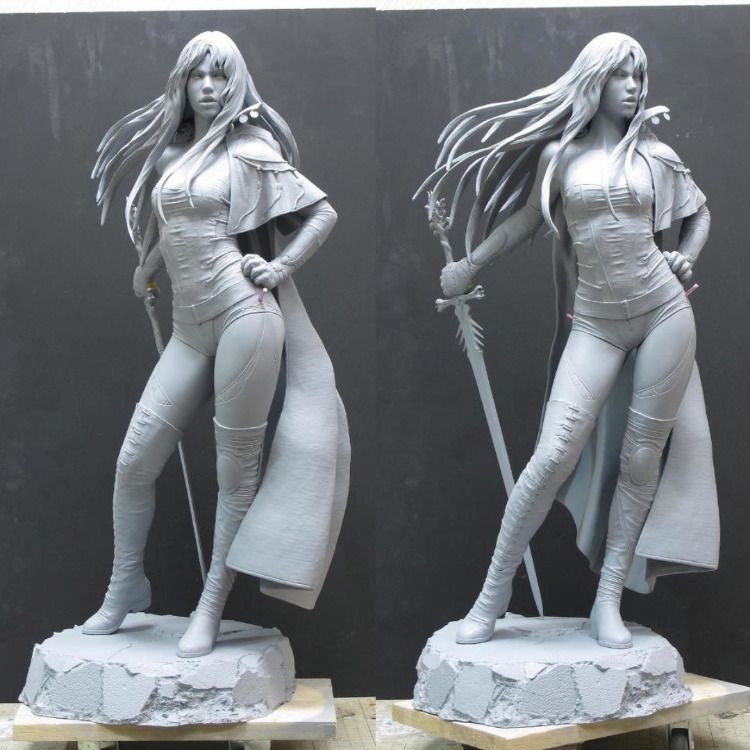
There are some crazy printers out there that will print in metal by making a sand mold and then casting the mold with metal but as long as you don´t use any of these printers but a regular resin or regular 3D printer then you will be fine.
Resin and plastic filament, even if it is a special filament, can easily be painted but you need to prepare the surface before painting it.
This is usually done by sanding the surface first to get rid of any imperfections and then applying a primer that will prepare the surface for painting and will ensure that the paint will adhere to the surface of the 3D print properly.
You can read a detailed guide on how to properly paint 3D prints right here.
The Best Way to Paint 3D Prints
There are several ways to paint 3D prints including using special paints that will simply adhere to the plastic surface of the prints without the need of a primer but the best way to paint 3D prints involves a few steps.
As a whole, the best way to paint 3D prints is by preparing the surface of the 3D print by sanding it first and then applying a primer.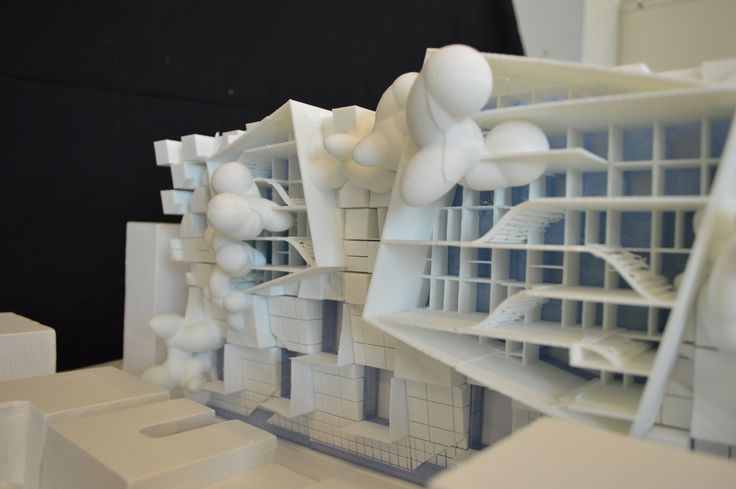 Now the surface is ready to be painted with any type of paint but it is best to use acrylic paint as it is easy to use and quite beginner-friendly.
Now the surface is ready to be painted with any type of paint but it is best to use acrylic paint as it is easy to use and quite beginner-friendly.
I tried quite a few ways to paint 3D prints including simply painting the model without any sort of preparation but the best way that I found and also the most reliable way is to prepare the surface by sanding and then priming it.
Here you can see how the model looks like before priming it and then after priming it.
And here is what it looks like after applying the primer.
As you can see, the primer will be a very fine layer of paint that will preserve all the details of the print while giving the surface the perfect conditions for painting it.
Sanding will get rid of imperfections and it will make sure that the primer adheres to the surface of the print, even though it is not necessary.
Applying the primer will prepare the surface for painting. The primer will adhere really well to the surface and any paint applied to the surface of the primer will adhere just as well.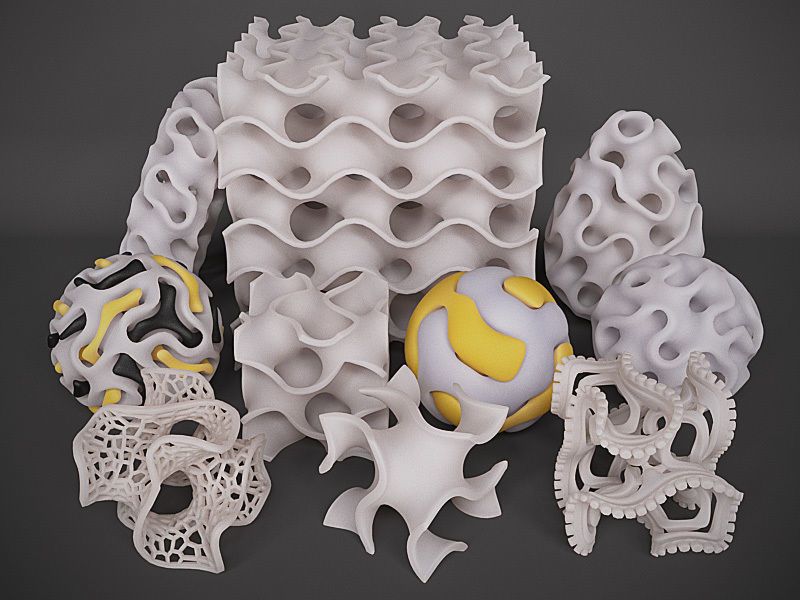
This will ensure that the paint won´t come off easily even when the surface is being scratched.
How to Paint PLA Plastic
One of the most often used filaments for 3D printing are PLA filaments. So it is no surprise that most people are curious about how to properly paint PLA.
To paint PLA plastic first sand the surface slightly to smooth it and remove imperfections. Then apply a well adhering primer to the surface before finally applying the paint directly to the surface. Acrylic paint is the best choice for beginners but enamel and oil paints can also be applied.
As you can see the process is pretty much exactly the same for almost any kind of 3D printed model.
If you want to know more about the process then consider reading my full guide on how to paint 3D prints right here.
Valentin
Hi, I am a passionate maker and professional prop maker for the entertainment industry. I use my woodworking, programming, electronics, and illustration know-how to create interactive props and puzzles for Escape Games and marketing agencies.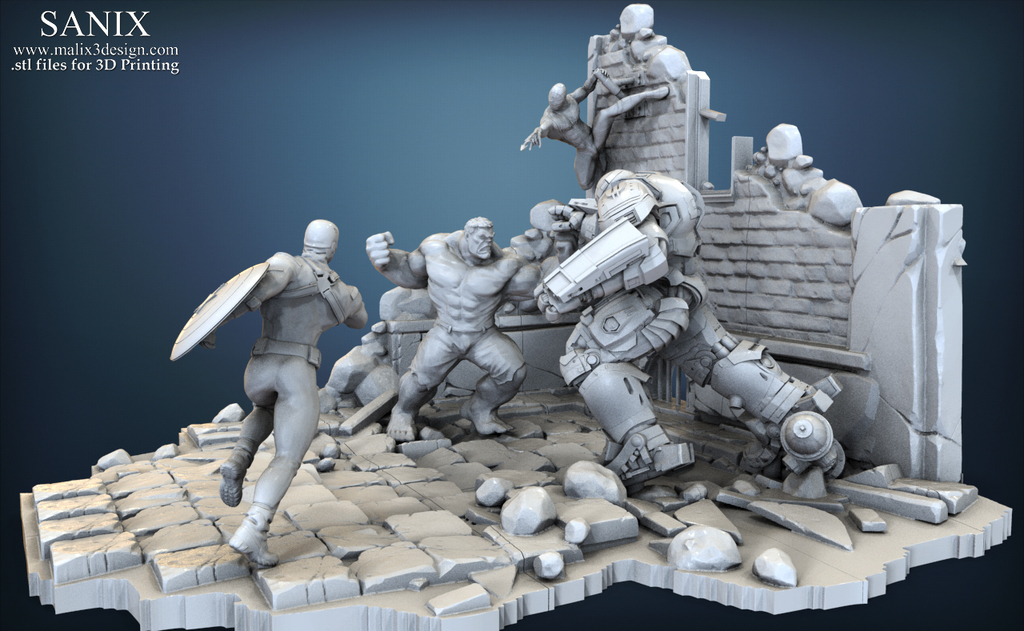 And I share my knowledge and my experience on this blog with you so that you can become a maker yourself.
And I share my knowledge and my experience on this blog with you so that you can become a maker yourself.
How to Paint PLA, ABS, PETG, Nylon – Best Paints to Use – 3D Printerly
Painting 3D prints is a great way of making your models unique and more accurate, but people get confused about how exactly they should be painting their 3D prints. I thought I’d put together an article that helps people to paint 3D prints from filaments like PLA, ABS, PETG & Nylon.
The best paints to use for 3D printed objects include Rust-Oleum’s Painter’s Touch Spray Paint and Tamiya Spray Lacquer. Before you start painting, make sure to prepare your print’s surface by sanding and priming it to achieve the best results.
I’ll go through the best techniques on how to properly paint your 3D prints, so keep reading through this article to get the useful details.
What Kind of Paint Should You Use for 3D Printing? Best Paints
The best paints to use for 3D printing are airbrush sprays if you have experience because you can get amazing detail and blending.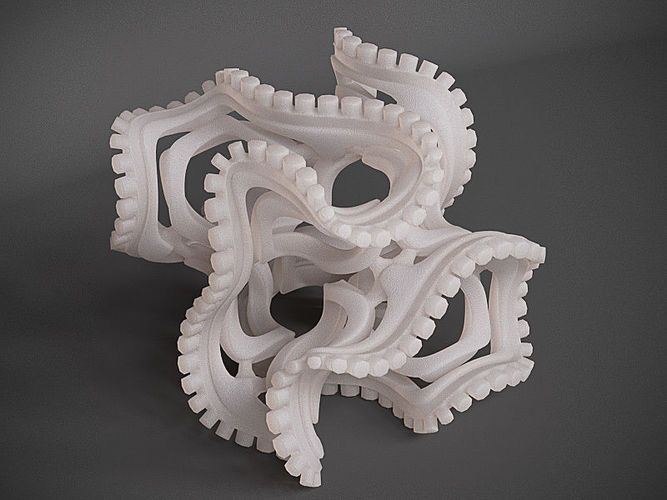 Spray paints and acrylic sprays are also great choices for painting 3D prints. You can also use an all-in-one primer and paint combo that primes and paints the surface.
Spray paints and acrylic sprays are also great choices for painting 3D prints. You can also use an all-in-one primer and paint combo that primes and paints the surface.
The best paints are ones that don’t form thick layers and are easy to control.
For beginners, it’s best to use canned spray paints for painting 3D printed objects which is affordable and easy to use too, as compared to an airbrush or acrylic paints.
I’ve gathered some of the best spray paints that work well with plastic and can be used for 3D printing below.
- Rust-Oleum Painter’s Touch Spray Paint
- Tamiya Spray Lacquer
- Krylon Fusion All-In-One Spray Paint
Rust-Oleum Painter’s Touch Spray Paint
The Rust-Oleum Painter’s Touch Spray Paint on Amazon is a high-quality product that actively adheres to popular filaments like PLA and ABS and gives you a premium-grade finish.
Rust-Oleum is a well-respected brand that the 3D printing community has great admiration for.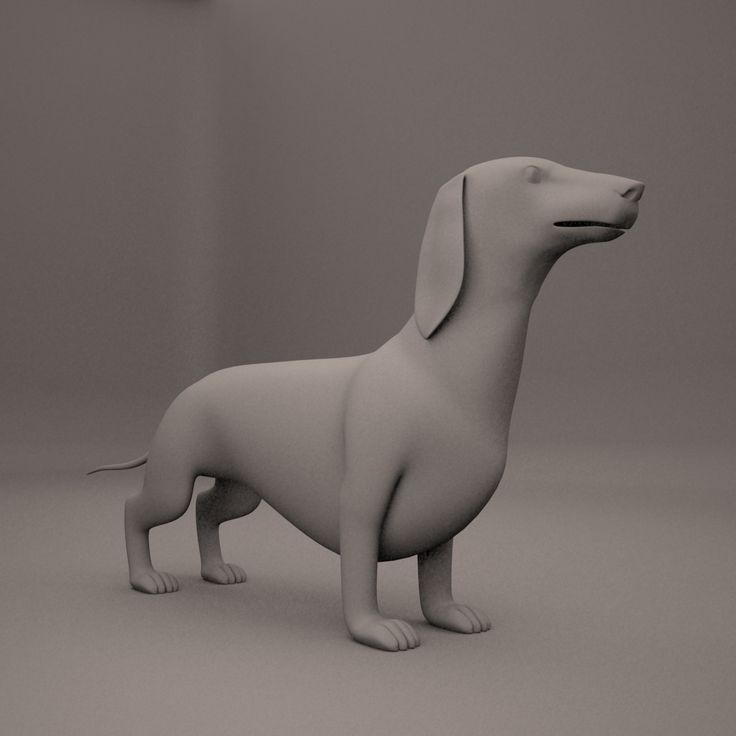 It’s known for its wide array of acrylic, enamel, and oil-based spray paints that work like a charm for 3D printed objects.
It’s known for its wide array of acrylic, enamel, and oil-based spray paints that work like a charm for 3D printed objects.
One of the best parts about the Painter’s Touch Spray Paint is that it’s a 2-in-1 product, mixing the primer and paint together and getting rid of extra steps required to paint your model.
People who regularly use this product say that there’s no better quality spray paint out there that packs this much value for money. According to some experienced 3D printer users, this Rust-Oleum spray paint creates thin coatings and makes your models look very detailed.
One customer has said that the Painter’s Touch Spray Paint has excellent coverage and is very easy to use. They were able to paint dozens of miniatures using this spray paint and all with amazing results.
It’s available in a variety of colors, such as Gloss Black, Modern Mint, Semi-Gloss Clear, and Deep Blue. A 12 oz can of Rust-Oleum Spray Paint costs somewhere around $4, so it’s also priced very competitively.
At the time of writing this article, the product has an “Amazon’s Choice” label attached to it with a fantastic 4.8/5.0 overall rating. 87% of the people who bought the Painter’s Touch Spray Paint have left a 5-star review.
It’s definitely one of the best spray paints out there that you should use for 3D printing. Coatings of this paint provide you with long-lasting protection, low odor, and a quick drying time of 20 minutes.
Tamiya Spray Lacquer
The Tamiya Spray Lacquer is another awesome spray paint that although isn’t acrylic but many 3D printer users still recommend for its effectiveness and affordability. You can find it for a great price on Amazon.
A bottle of 100ml of Tamiya spray paint costs somewhere around $5. However, you will need to apply a primer to your model’s surface before using this spray paint because it is not an all-in-one solution, unlike the Rust-Oleum Painter’s Touch Spray Paint.
One of the best features of the Tamiya Spray Lacquer is its quick curing time. Many people say that their models dried completely within 20 minutes.
Many people say that their models dried completely within 20 minutes.
At the time of writing this article, this product has a 4.8/5.0 overall rating with 89% of the people leaving a 5-star review lauded with praise.
The Tamiya Spray Lacquer isn’t affected by enamel or acrylic paints, so you’re free to apply more coatings of paint to your print if you want to add details or remove some.
One user says that this spray paint has turned out to be ideal for their ABS models, but you can use it for other filaments as well. The finishing looks amazing and one can is enough for 2-3 19cm long objects.
Krylon Fusion All-In-One Spray Paint
The Krylon Fusion All-In-One Spray Paint (Amazon) is a staple product in the 3D printing industry. Thousands of people use it to effectively post-process their 3D printed objects, and some even call it the best paint for PLA.
This spray paint offers top-of-the-line adhesion and durability for your prints. It also protects the object from rust and can be applied to surfaces without having to sand or prime them beforehand.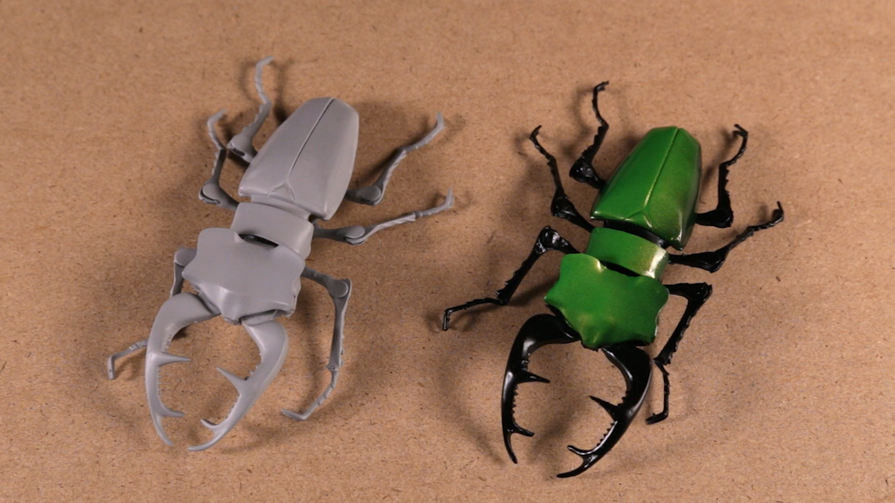
With fast drying times, your 3D printed model can become ready to touch in less than 20 minutes. You can also spray painlessly in all directions, even upside down.
A customer has mentioned that the paint job turned out just as expected with their 3D printed PCL plastic with a high-quality finish and a picture-perfect result.
One more user has said that this spray paint also boasts UV resistance and is very durable as well. It has been specially formulated to bond with plastics to make the finishing look spectacular and strong too.
This is a great plus point if you’re looking to make mechanical parts with added durability and strength. Applying 2-3 coats of this paint will definitely make your print more professional, as many people have expressed.
At the time of writing, the Krylon Fusion All-In-One Spray Paint boasts a 4.6/5.0 overall rating on Amazon. It has gathered more than 14,000 ratings on the marketplace where 79% of them are thoroughly 5-star.
One person who picked this item up says that it’s very easy to use with the big button spray tip.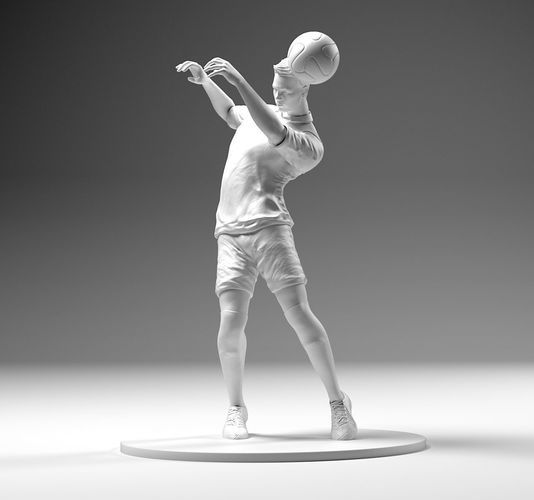 Another user has mentioned that this spray is also aquarium safe once dried.
Another user has mentioned that this spray is also aquarium safe once dried.
All in all, this fantastic Krylon product is one of the best spray paints for you to use with 3D printing. It costs about $5 and guarantees great value for money.
Can I Use an Airbrush for Painting 3D Prints?
Yes, you can use an airbrush for painting 3D prints for a great control on color blending and precision. Many people successfully use an airbrush for painting their 3D prints, usually suited to people with more experience since it can be difficult for beginners. It can require special equipment like a compressor.
It is definitely a more advanced technique than canned spray paints that you can use for effectively painting your parts.
If you’re a beginner, I highly recommend the Master Airbrush G233 Pro on Amazon that falls within the budget-friendly range and packs top quality on a consistent basis.
It comes with 3 nozzle sets (0.2, 0.3 & 0.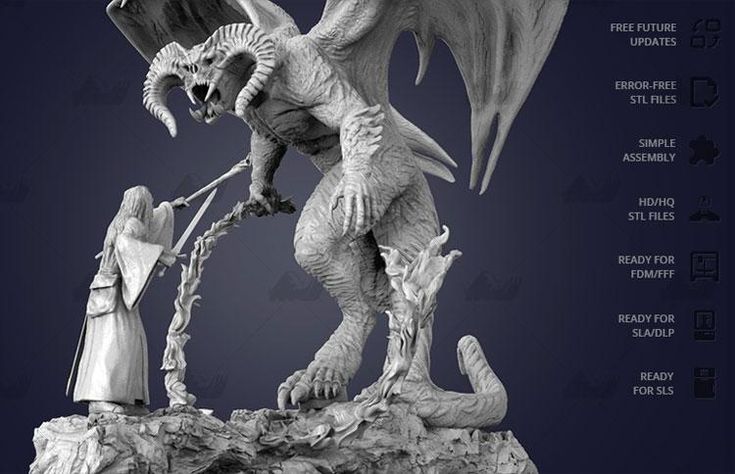 5 mm needles) for extra detailed sprays and consists of a 1/3 oz gravity fluid cup. The G233 is loaded with features not found on other airbrushes that cost twice as much.
5 mm needles) for extra detailed sprays and consists of a 1/3 oz gravity fluid cup. The G233 is loaded with features not found on other airbrushes that cost twice as much.
There is a quick disconnect coupler and plug that includes an in-built valve for controlling airflow. In addition, it also has a cutaway handle that makes it easy to flush and clear air passages.
One person who frequently uses this airbrush for painting their 3D printed parts says that once you get the hang of this device, it’s only smooth sailing with easy, effortless painting.
Another customer says that they tried their luck with this airbrush as it was their first time buying one, and it turned out to be great. They needed to paint some 3D prints and were easily able to get it done on time.
Many 3D printer users are using this airbrush consistently to paint their models, all because of how precise and easy to control it really is.
At the time of writing, the Master Airbrush G233 Pro enjoys a solid reputation on Amazon with a 4.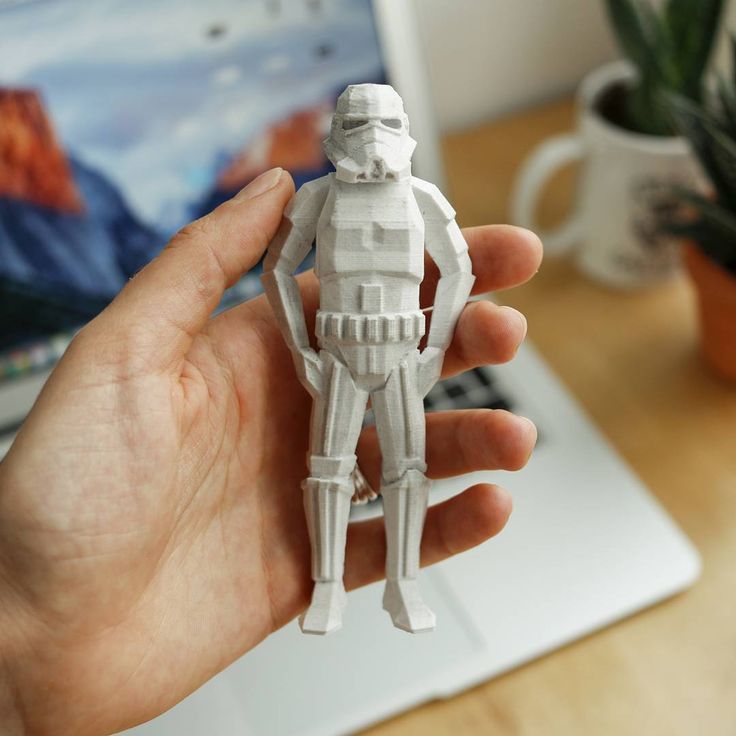 3/5.0 overall rating, and 66% of the people who bought it have left a 5-star review.
3/5.0 overall rating, and 66% of the people who bought it have left a 5-star review.
It comes for about $40 and works great for those who aren’t well-versed with painting. Customers call it the ideal airbrush for their 3D prints that makes the job a lot easier.
How to Paint PLA, ABS, PETG & Nylon 3D Prints
To paint PLA, ABS, and PETG, you first need to smooth the surface of the print by sanding and using a primer. Once done, applying light, even coats of a high-quality spray paint is the best way to paint your prints. For Nylon, dyeing is considered to be a far better option than painting.
Painting 3D prints belongs to the post-processing stage of 3D printing. Before you can paint your models and expect a professional finish, you first have to go through a bunch of post-processing steps to achieve the best results.
Let’s break the whole process down so you can have an easier time understanding the phenomenon of painting.
- Support Removal & Cleanup
- Sanding
- Priming
- Painting
Support Removal & Cleanup
The first stage of post-processing is the removal of support structures and small blemishes from your model.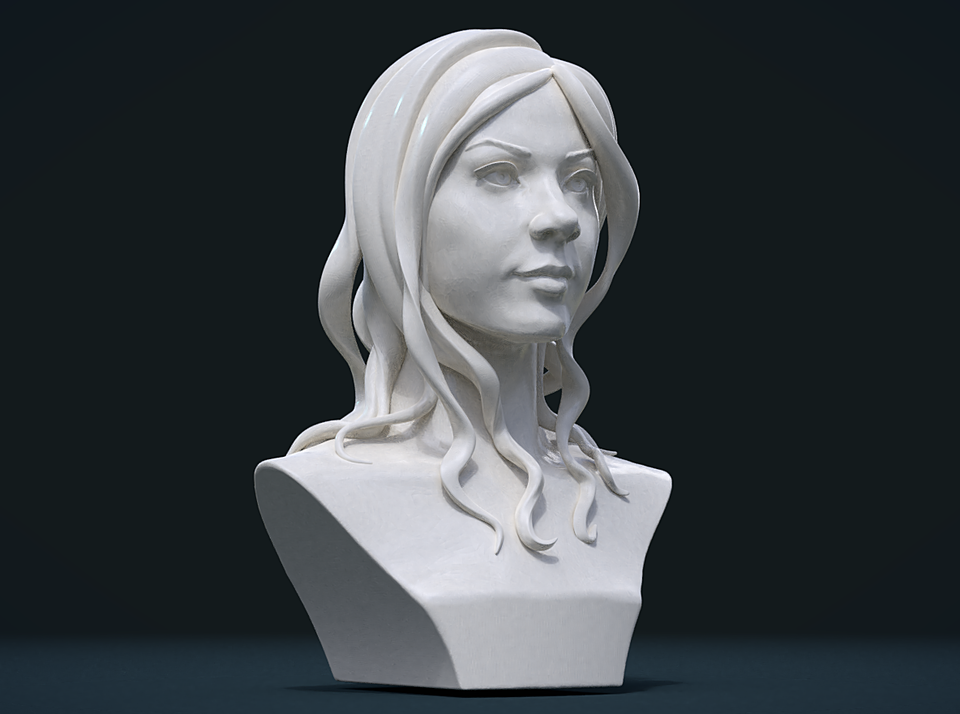 This can be easily done if the material can be removed by hand, but you might require a tool like flush cutters or a knife in other cases.
This can be easily done if the material can be removed by hand, but you might require a tool like flush cutters or a knife in other cases.
Support removal should be done with great care and detail because tips of the support structures can often leave undesirable marks on the surface of your print.
Most people use something like the X-Acto Precision Knife on Amazon for making fine cuts with ease and agility. This is a very affordable product that costs just about $5 and works like a charm for 3D prints.
If you’ve removed your supports carefully, but there are still some unsightly marks on your print, don’t worry because this is where the next step of post-processing comes in.
Sanding
Sanding is the simple process of smoothing your 3D printed parts with the help of a sandpaper. In the beginning, you want to use a low-grit sandpaper, such as 60-200 grit, and work your way up to higher grit sandpapers.
This is because the higher the grit number, the finer your sandpaper will be.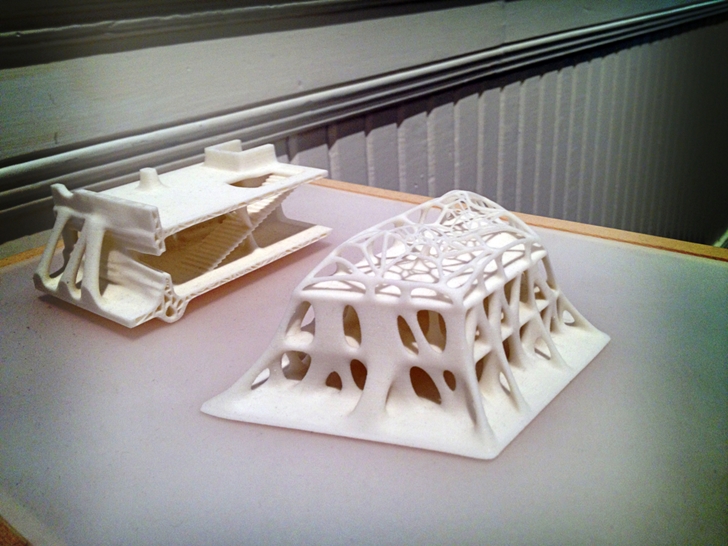 You can initially use 60-200 grit sandpaper to remove any support marks and then proceed with finer sandpapers to smooth the entire model as per your liking.
You can initially use 60-200 grit sandpaper to remove any support marks and then proceed with finer sandpapers to smooth the entire model as per your liking.
You can go with the Austor 102 Pcs Wet & Dry Sandpaper Assortment (60-3,000 Grit) from Amazon.
It’s advised to sand the model in circular motions and be gentle overall. When you move up to higher grit sandpaper, like 400 or 600 grits, you can choose to also wet sand the model for a smoother and finer finish.
After sanding your model, make sure that there’s no dust on it before moving on to priming and painting. You can use a brush and some water to wipe your model clean and then use paper towels afterward to dry it.
When your model is all dry, the next step is to either hang it somewhere dust-free and well-ventilated using a cord or drill a hole into a hidden spot of the model and mount it on a dowel, so you could prime and paint it with ease.
Priming
Now that we’ve smoothed the surface of the model and it’s ready for its first coat of primer, it’s time to grab a high-quality primer like the Rust-Oleum Painter’s Touch 2X Primer on Amazon and get to spraying your model.
For priming, it’s recommended to hold your model 8-12 inches away from the spray of the primer.
In addition, you want to prime your part quickly in rapid strokes and avoid spraying at one area for too long, since this can cause the primer to accumulate and start dripping, which is something you definitely don’t want.
You also want to rotate the part while you’re spraying the primer, so the coat is spread out evenly throughout. Keep in mind to make light coats because applying thick coats can hide the fine details of your model.
When you’re done with the first coat, let the model dry for 30-40 minutes or according to the instructions of your primer. When it has dried, inspect your model to see if any more sanding is required. It’s common for primers to leave rough textures on your model.
If you see that you have to sand, use a higher grit sandpaper like 600-grit so you can smooth out the sharper details, and be sure to clean off the dust after sanding before moving on.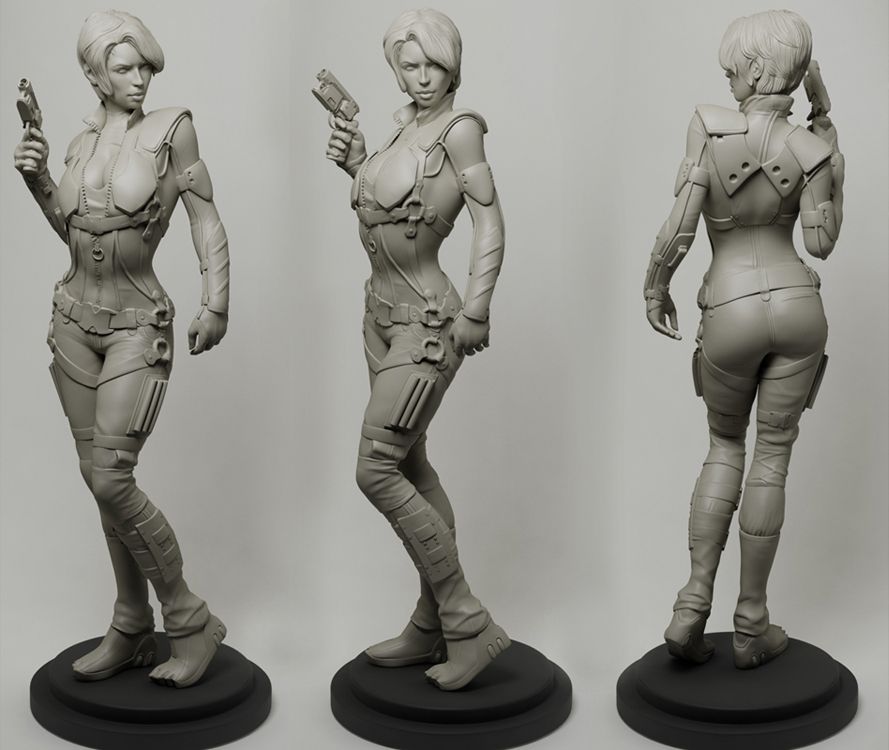
Once done, it’s time to apply another coat of primer to your model using the same technique as the first coat. You want to make your sprays are quick and swift and that you’re rotating the part while priming it.
Usually, two coats of the primer are enough for a clean surface finish, but you can add more layers if you want. When you’re all finished with priming, it’s time to paint your model.
Painting
To paint your model, you’ll have to use a plastic-compatible spray paint that works as intended and doesn’t create thick layers on your part’s surface.
For this purpose, it’s wise to use any of the spray paints that were talked about earlier since all of them are highly admired by the 3D printing community and work great.
Begin by shaking your can of spray paint for as long as the manufacturer recommends. This will mix up the paint inside, which will allow your parts to get a better finish
Once done, begin spray-painting your model with quick strokes while your model is rotating. Make sure to keep the coats thin.
Make sure to keep the coats thin.
It’s a good idea to paint at least 2-3 coats, so the surface finish looks as good as possible. Keep in mind that you need to wait 10-20 minutes between each coating of paint for the best results.
After you’ve applied the final coat, wait for your model to dry and reap the benefits of your hard work.
Post-processing can get very confusing at times, so it’ll be very helpful to watch an informative tutorial video on this topic. The following is a great visual guide on painting your 3D printed objects.
While Nylon can also be painted with spray paints and acrylics, we can use its hygroscopic nature to our advantage and dye it instead, which is a much easier method of making your Nylon prints impressively colorful.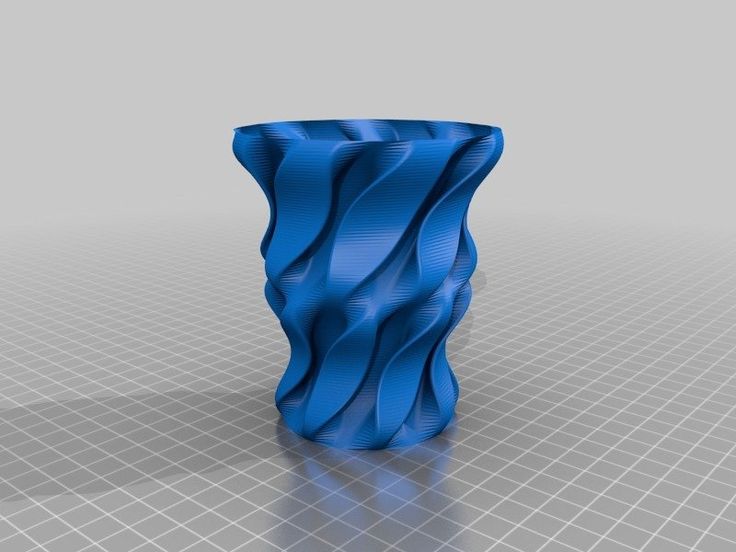
Nylon tends to absorb moisture more readily than most other filaments. Therefore, dyes can be applied easily to it and bring you amazing results. You can also paint PETG prints this way, as many enthusiasts have said.
However, it’s recommended to use specific dyes made for synthetic fiber like Nylon, such as the Rit All-Purpose Liquid Dye on Amazon that’s specially formulated for polyester fabrics.
This product has more than 34,000 ratings on the marketplace with a 4.5/5.0 overall rating at the time of writing. It costs somewhere about $7 and packs great value for your money, so definitely one of the best choices to go with for dyeing Nylon.
The method of dyeing Nylon is pretty straightforward. You can watch the highly descriptive video given below by MatterHackers on this topic and also check out my ultimate guide on printing Nylon for a step-by-step tutorial.
Can You Paint 3D Prints Without Primer?
Yes, you can paint 3D prints without a primer, but the paint usually won’t adhere properly to the surface of the model. A primer is used so the paint can easily stick to your 3D prints rather than coming off easily afterward. I’d recommend that you either use a primer then paint your model, or use a 2-in-1 primer.
ABS and TPU are known to be quite challenging to paint without using a primer due to the surface properties.
By researching around in forums, I’ve found people saying that if you use acrylic paints for painting your 3D prints, there’s a good chance that you won’t need to prepare the surface with a primer beforehand.
You can probably get away without using a primer for painting 3D prints but bear in mind that the best results usually follow when you prime your models.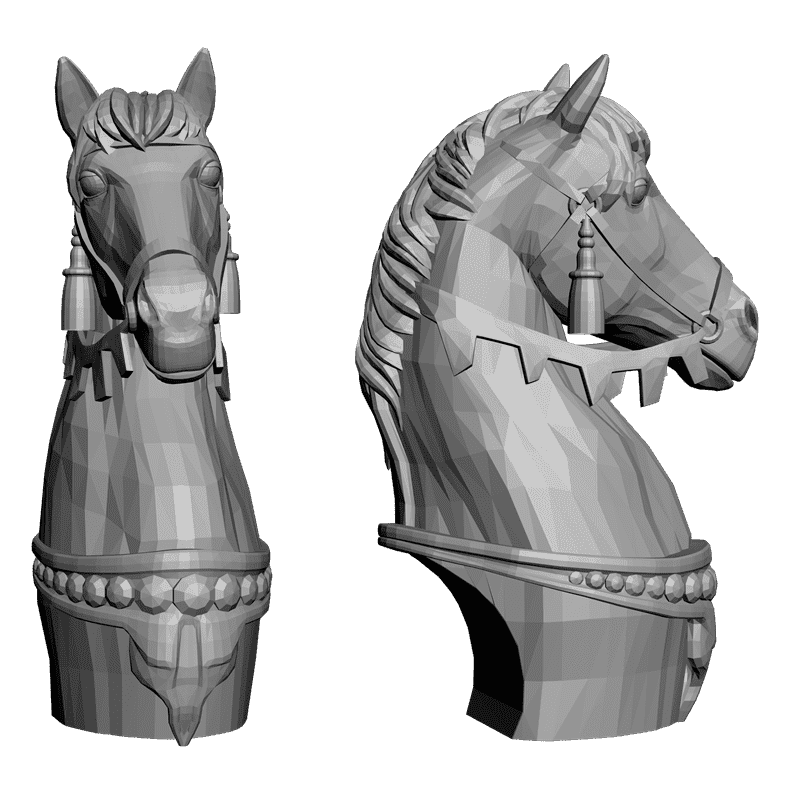
That is because primers fill up your print lines, and prevent the paint from settling in them as the paint has a tendency of dripping down to the lowest point of the surface of the part before it hardens.
This is why it’s pretty important to prime your models first before painting to achieve a high-quality look.
That said, I’ve come across a YouTube video by Paul’s Garage that goes over a unique method of painting 3D printed objects without a primer.
This is done using oil-based pens that do not warrant sanding or priming prior to painting. This is a relatively new way of making your 3D prints colorful and full of life.
You can get the Oil-Based Markers by Sharpie on Amazon for somewhere around $15.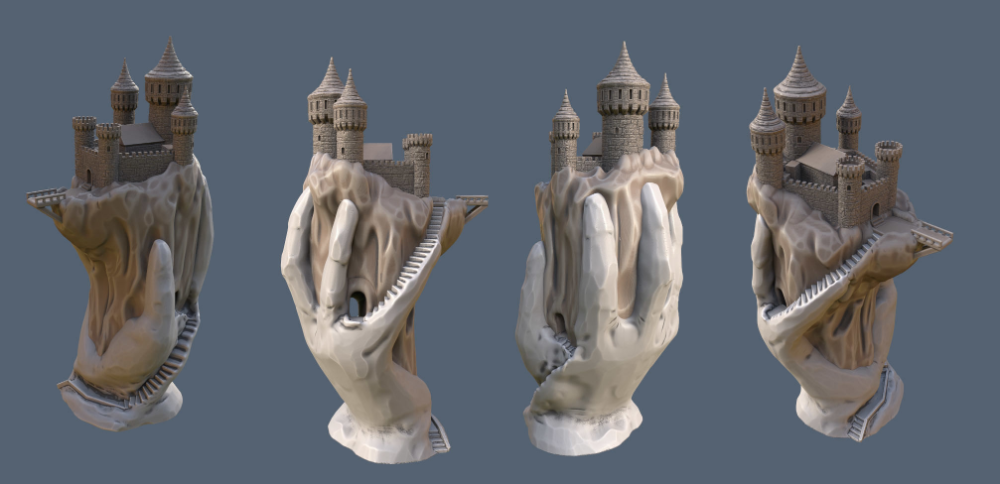 This product is currently decorated with the “Amazon’s Choice” label and also has an admirable 4.6/5.0 overall rating.
This product is currently decorated with the “Amazon’s Choice” label and also has an admirable 4.6/5.0 overall rating.
People who picked up this highly rated product say that the markers have a quick drying time and a medium point that conceals visible layer lines.
The markers are also made resistant to fading, smearing, and water – making the product the perfect choice for long-term paint projects.
Many people have said that these markers have proved to be excellent for custom paint jobs on their 3D prints. Plus, since there’s no added hassle of post-processing the prints now, you can quickly finish your models.
Can You Use Acrylic Paint on 3D Printed Objects?
Yes, you can successfully use acrylic paints on 3D printed objects for a great surface finish. They are cheap and can be applied to models easily, although there’s a bit more effort involved as compared to regular spray paints.
I’ve mentioned earlier that spray paints are best for beginners, but using acrylic paints has its own set of benefits as well.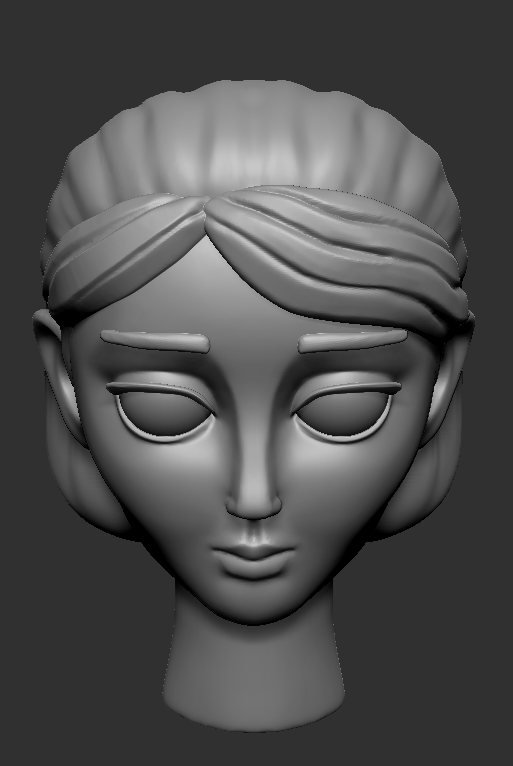 For instance, acrylic paints dry faster and can be cleaned with water.
For instance, acrylic paints dry faster and can be cleaned with water.
However, it can get hard to get a perfectly even coat of paint with acrylic paints. Still, if you’re very new to the field of 3D printing and you’d like to better your post-processing, acrylic paints are actually a great way to start.
You can find high-quality acrylic paints near where you live in local stores or online. The Apple Barrel PROMOABI Acrylic Craft Paint Set (Amazon) is a top-rated product that’s priced affordably and includes 18 bottles, with each of them being 2 oz in quantity.
At the time of writing, the Apple Barrel Acrylic Craft Paint Set has more than 28,000 ratings on Amazon and an awesome 4.8/5.0 overall rating. Moreover, 86% of customers have left a 5-star review at time of writing.
People who bought this acrylic paint set for painting 3D printed parts say that the colors look fantastic and the adhesion of the paint is just right.
One user has said that they didn’t even feel the need to sand or prime the model before painting. They jumped right in with these paints and a few extra coats got the job done perfectly.
They jumped right in with these paints and a few extra coats got the job done perfectly.
Another user who mentions their zero experience with painting says that this acrylic paint set is very easy to use, and the colors have a lot of variety to them.
It’s recommended that you apply acrylic paints to your model after priming. One person mentions that after post-processing their part and then painting the model, they were able to get rid of the print lines and create a high-quality part.
It’s worth watching the following video to get an idea of how to print 3D prints with acrylics.
Best Primer for SLA Resin Prints
The best primer for SLA resin prints is the Tamiya Surface Primer that’s priced competitively and is simply unmatched for preparing high-quality models and SLA prints.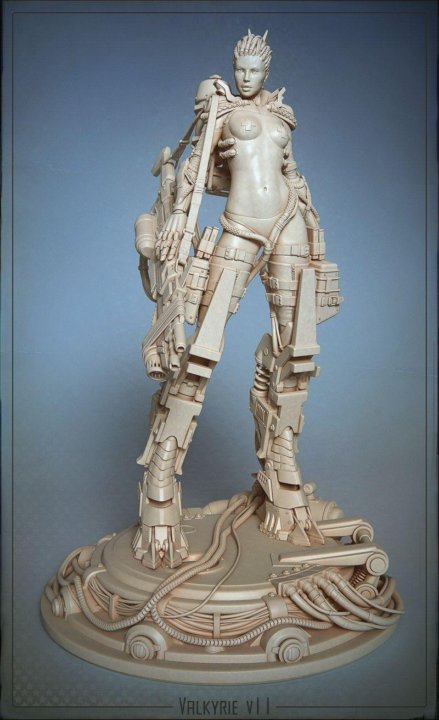 When sprayed correctly, you may not even have to do extra sanding because the quality is great.
When sprayed correctly, you may not even have to do extra sanding because the quality is great.
You can buy the Tamiya Surface Primer easily on Amazon. It is currently labeled as the “Amazon’s Choice” and boasts a 4.7/5.0 overall rating. In addition, 84% of the people who bought it have left a 5-star review for this product at time of writing.
One customer in their review has said that this Tamiya primer goes evenly on models and is very easy to apply. It makes sure that the follow-up paint will stick nicely to your model thereby producing a terrific finish.
It’s recommended to use the primer and paint from the same brand for the best results. Thousands of people have chosen Tamiya as their choice and they have not been disappointed.
Luckily, Amazon has a whole host of plastic-compatible Tamiya paints, so you should have no trouble finding one for your SLA resin prints.
You can see how 3D Printed Props uses a Tamiya surface primer to create a stunning model in the video below.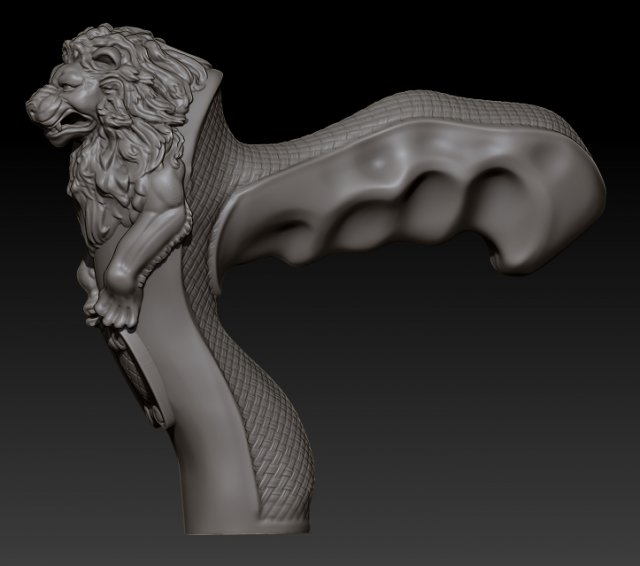
Painting advice for 3D models (PLA, ABS, PETG, NYLON)
3DPrintStory Reviews Recommendations for painting 3D models (PLA, ABS, PETG, NYLON)
Despite multi-material extruders and a stunning variety of 3D printable plastic colors, you'll still want to paint some of your 3D models sooner or later. The most common reason is to improve the external 3D model, especially if you are printing on an FDM 3D printer where the model is built up by layering material over time.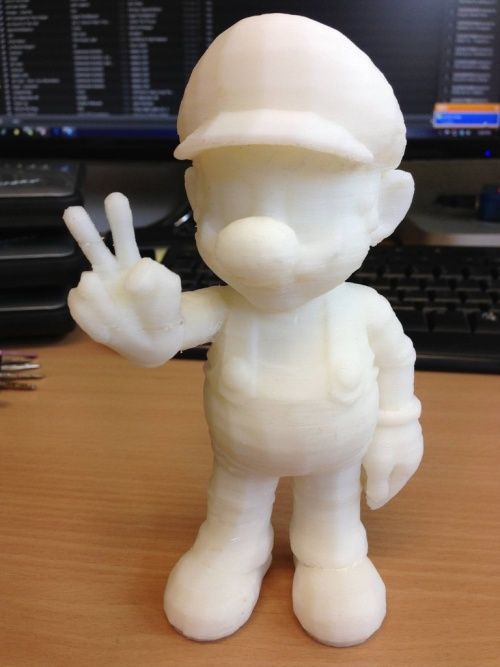 It is FDM 3D printers that form a model with feature lines along the Z axis.
It is FDM 3D printers that form a model with feature lines along the Z axis.
When finishing a 3D model, small cavities between layers are sanded, filled, or both. The result is a smoother surface. Painting can also help protect the model from the environment.
This article is divided into two parts: the first will introduce you to the different techniques for painting a 3D model, and the second will (hopefully) answer all your little questions about painting techniques and how best to do it. Read on to find out how to enhance your 3D models with paint!
Primer is paint's best friend
Priming a printed model improves ink adhesion. With any painting method (other than nylon dyeing), using a primer is a good idea. Spray primer is said to be the easiest way to get good results. The process for using the primer is very simple:
- Clean and sand your 3D model.
- Apply the primer in thin, even coats.
- Sand after the first and last coats until the surface is smooth.
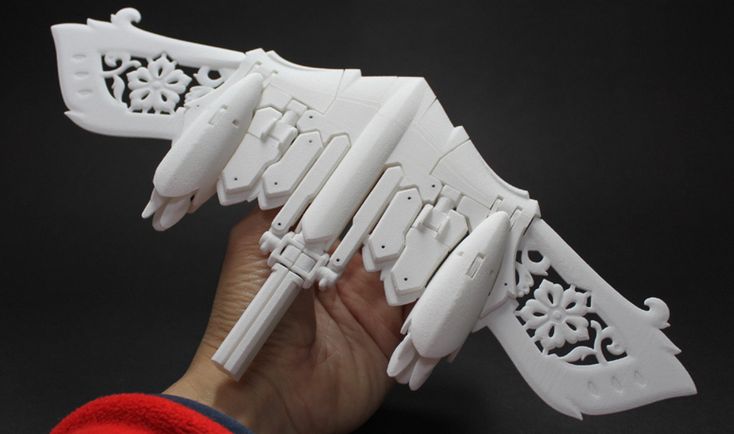
- Let each coat dry according to the instructions supplied with the primer.
Method 1: Paint with a brush
Best for: PLA, ABS, PETG plastics.
If you paint a 3D printed model with a brush, you will definitely achieve a unique "handmade" effect.
Try a few brushes first because it's easier to get good results with a comfortable brush. As a rule, it is enough to use only 1 or 2 different flat brushes.
Brush
- Choose a quality brush that is hard enough to handle the viscosity of the paint you are working on.
- Experiment with different bristle types and handle shapes to find the one that works for you.
- Stop painting to clean the brush as soon as the paint starts to dry. Naturally, the brush must be cleaned after each use. Do not leave drying paint on the brush bristles.
- The brush must be stored on the handle after cleaning and not on the bristles.
Paint
When it comes to brush painting, you're better off using acrylic paints.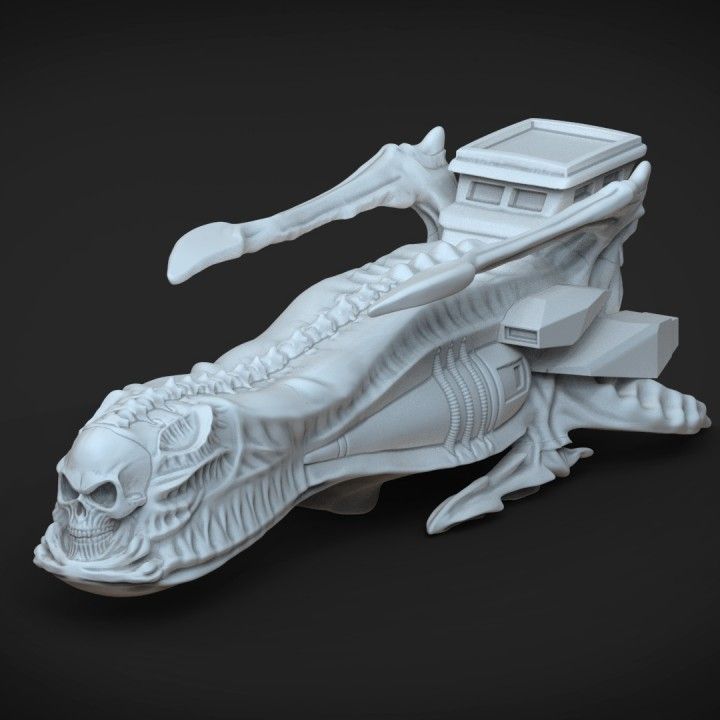
Painting process
- Clean and sand your 3D printed model.
- Apply the paint in thin, even coats.
- Let the individual layers dry.
Method 2: Spray painting
Best for: PLA, ABS, PETG plastics.
If you want to paint a 3D printed model uniformly using one color, then using an aerosol will give the best result.
Spray can
Some brands offer nozzles with different specifications.
Shake can according to manufacturer's recommendations before use. Allows the paint to come out more evenly.
Keep the nozzle clean. This is usually achieved by spraying the inverted can slightly at the end of each session.
Keep can away from open flame and store in a cool place. Don't forget that this is a high pressure container!
Paint
When looking for spray paint, you will find that there are many varieties. If you want to use a specific shade, please read the RAL, CMYK and RGB values on the can carefully.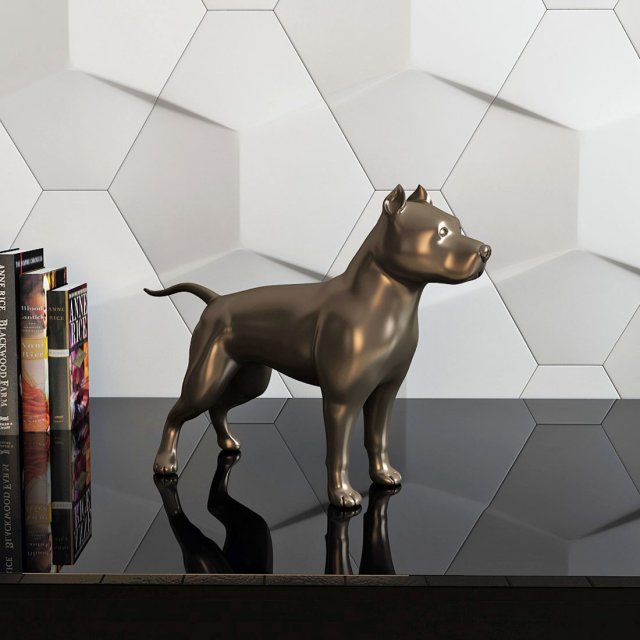
Painting process
- Clean and sand your 3D printed model.
- Start spraying by aiming the jet a little beyond the edge of the object you want to paint.
- Apply the paint by spraying on the surface you want to paint in slow, even strokes.
- Stop spraying by directing the jet a little beyond the object you want to paint.
- Let the paint dry.
Method 3 Liquid Color (nylon only)
Best for: NYLON plastics.
Instead of trying to get paint to adhere to the surface of your 3D printed nylon model, we recommend using liquid dye instead. Note that this will not work with other materials. Although PLA is hygroscopic and absorbs some water from the environment, it cannot be dyed by absorbing dye. ABS and PETG are also not suitable for this technique.
In order for the ink to give a good pronounced color after absorption, it is better to use a translucent or white nylon material when 3D printing.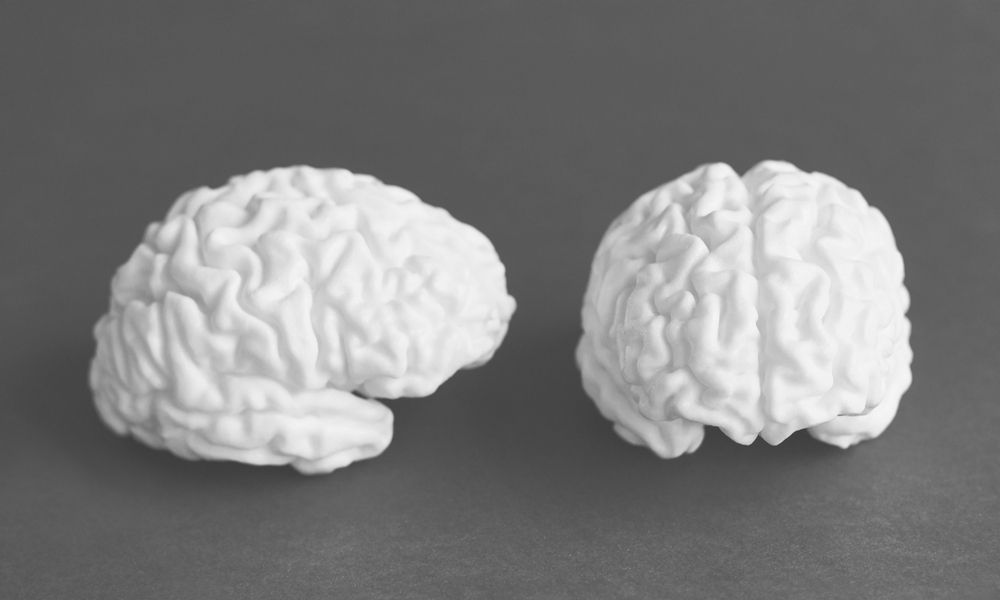 Darker nylon fibers can also be dyed, but the color will be much less pronounced.
Darker nylon fibers can also be dyed, but the color will be much less pronounced.
Colorant
There are many brands of colorant to choose from, but MatterHackers recommends Rit DyeMore for example. But in general, if the dye is intended for synthetic fabric, then everything will be in order.
Staining process
Since nylon is very hygroscopic, it absorbs water even outdoors. This is why you should always dry your nylon material before 3D printing. We recommend painting the finished model, not unprinted.
How to use
Read the manufacturer's instructions for your colorant. In short, using a dye is a pretty simple method:
- Clean up your 3D model. When sanding, remember that painting will not cover scratches and marks on the surface of your model. Everything will be visible even after staining.
- Mix the dye with water and heat in a saucepan.
- Use a thermometer to monitor the dye temperature. Follow the manufacturer's instructions, but keep the temperature below the thermal deflection temperature of the filaments.
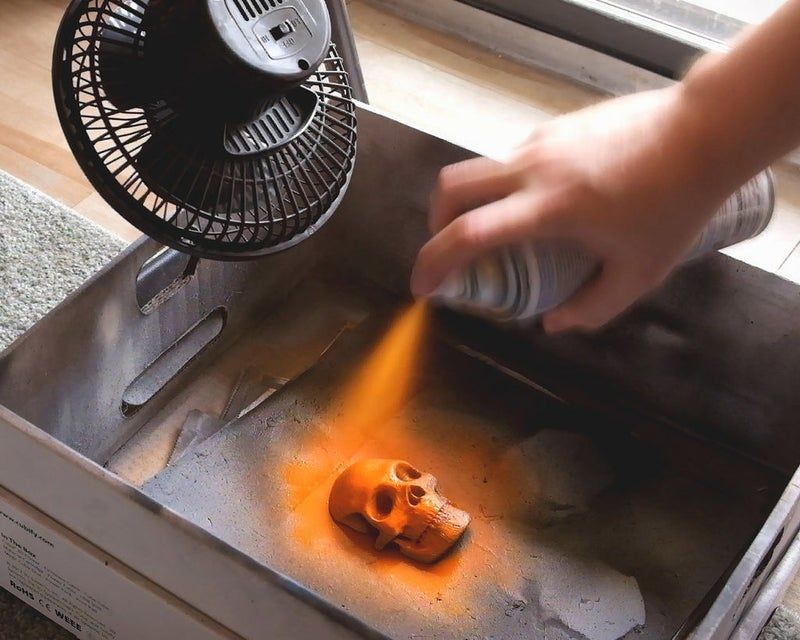
- Attach the weight to the 3D print and dip it into the paint pot.
- After coloring, rinse well in a bath of cool water.
- To make sure you get the expected color, it's worth doing a few test coats.
How to tell if a paint will set with a 3D model
Probably the most important factor in causing the paint or liquid of your choice to stick to a solid surface is the difference in surface energy between the liquid and the solid. The one with the most surface tension always wins (surface tension has its own unit called dynamos, or dynamos per square centimeter).
The general rule is that the surface tension of the paint must be at least 10 units lower than the solid material for good adhesion. This means that we have a liquid with a high wetting ability on a solid, and we need wetting.
To get an idea of how well the surface to be painted is wetted, look at the shape of the drop of liquid on the solid surface:
- Apply a drop of paint or liquid to the surface of the 3D model you want to process.
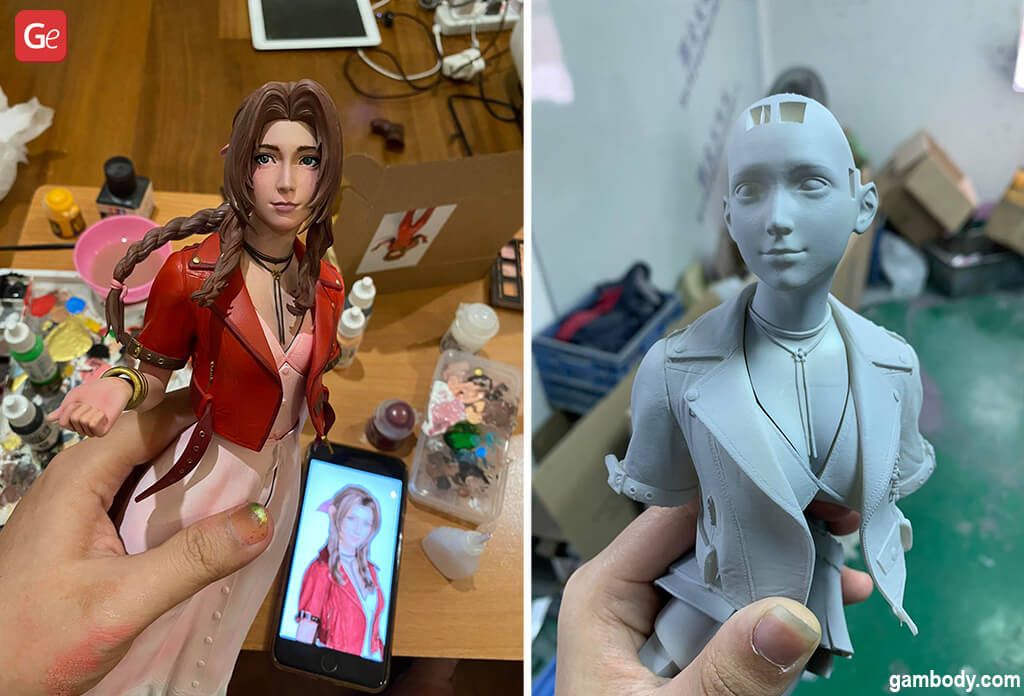
- If the liquid forms a ball, it has too much surface tension to effectively wet the object, and the solid cannot "pull" the liquid onto itself.
- If the liquid spreads over the surface, forming something like a lens, wetting is better.
Is it possible to paint a 3D model from any material?
Painting 3D models from PLA and ABS plastics is a fairly simple task.
PETG can have paint durability issues, but the same techniques apply as for PLA and ABS. But if you really need a rich, vibrant color, then it's best to print your 3D PETG model in the desired color and leave it as it is.
When it comes to nylon, which is used for 3D printing, we must remember that the paint does not set well. In general, it is possible to paint with acrylics and nylons, but this will require some heat treatment to maximize the surface tension and allow the paint to wet. Often this is done with an open flame or plasma... In general, this does not look easy at home, so it is better to use dyes.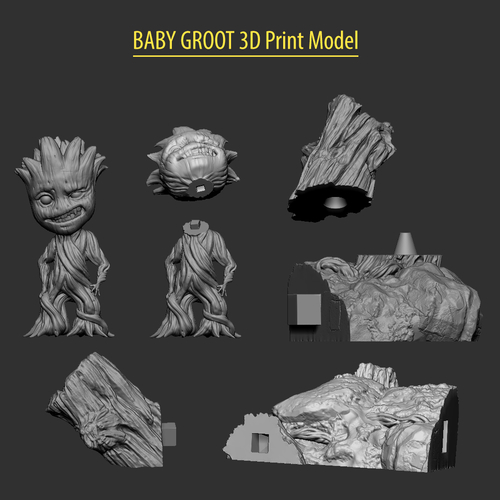
Planning before 3D printing
In order to facilitate the process of finishing and painting, before 3D printing your model, we recommend that you consider the following:
- Lower 3D printing resolution saves printing time, but increases processing time.
- Consider the geometry of your model. Your tools should reach where you want to sand or paint.
- Do the smallest details need sanding, priming or both? If so, can they handle it without breaking?
- If dimensional accuracy is important for some parts of your 3D model, you may need to take this into account when modeling. Add material to be sanded to size, or reduce size to make room for primer and paint.
- Primer and paint add thickness and can completely hide the fine details of your model.
- Sanding removes material and makes your 3D model less durable.
Items to improve paint adhesion
And finally, a few simple steps to improve paint adhesion:
- When working with a 3D printed model, wear clean gloves to protect the skin from chemicals and the surface of the model from sebum.
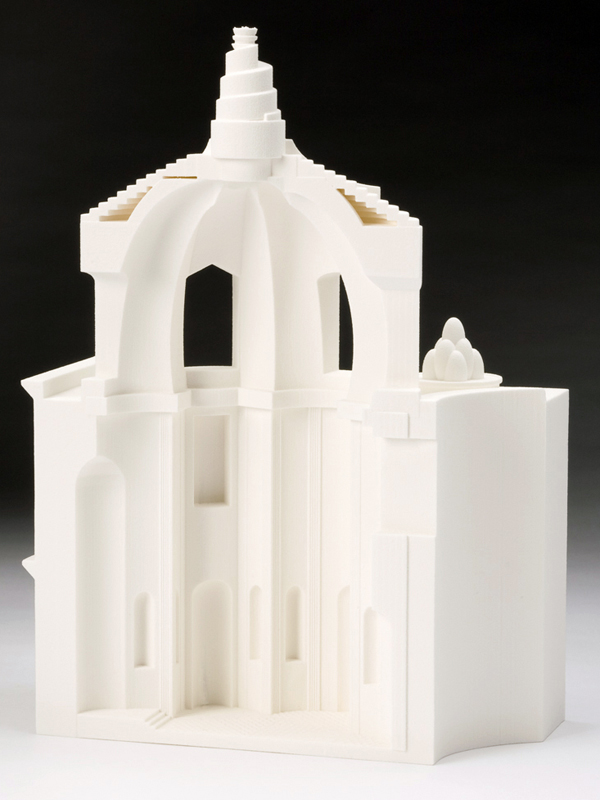
- Remove dirt before sanding, you don't want dirt to get into your model. Often, isopropyl alcohol (rubbing alcohol) on a soft, lint-free cloth works well.
- Use a regular vacuum cleaner with a soft and clean brush to remove sanding particles.
- Sand off any roughness added during the primer.
- Always test chemicals such as paint, cleaning solvents, sanding, or other materials and finishes before moving on to the final model you want to refine.
How to prime and paint 3D printed models (with video)
Primer
Primer is a special paint that adheres strongly to the part and ensures that the paint adheres to the surface evenly. There are different primers designed for different purposes. Spray primer is the best way to paint 3D printed parts as it quickly covers the surface in an even coat. There are primers available for brush application, but they are difficult to work with and are better suited for fine finishes.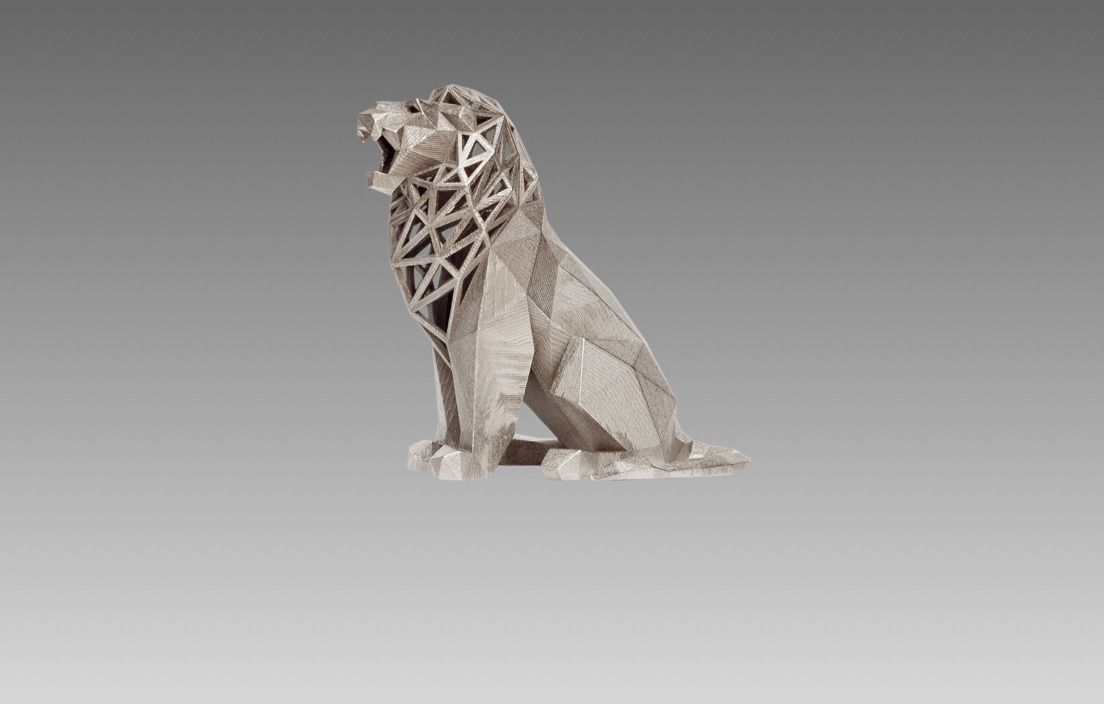 For best results, choose a plastic-compatible primer and paint from the same manufacturer. We love the Krylon and Montana brands (although they are thick), but Tamiya's paint is unparalleled - it forms a very thin and even coat, retaining all minor surface features.
For best results, choose a plastic-compatible primer and paint from the same manufacturer. We love the Krylon and Montana brands (although they are thick), but Tamiya's paint is unparalleled - it forms a very thin and even coat, retaining all minor surface features.
Rotary tool
Sometimes you need to finish sanding quickly. The use of interchangeable nozzles for rotating tools allows you to grind and polish models in various ways. The drum allows you to quickly grind marks from supporting structures, and steel wire cleans marks well on flat surfaces. Rotary tools are designed for rough cleaning, so you will need sandpaper to make the surface smooth. There are many great brands: Dremel and Craftsman are popular in the US, and Proxxon is popular in Europe. In order not to burn your model, reduce the speed to a minimum (usually 500-1000) and do not apply pressure to the tool.
Flat files
These tools are not as clumsy or inaccurate as a hand sander.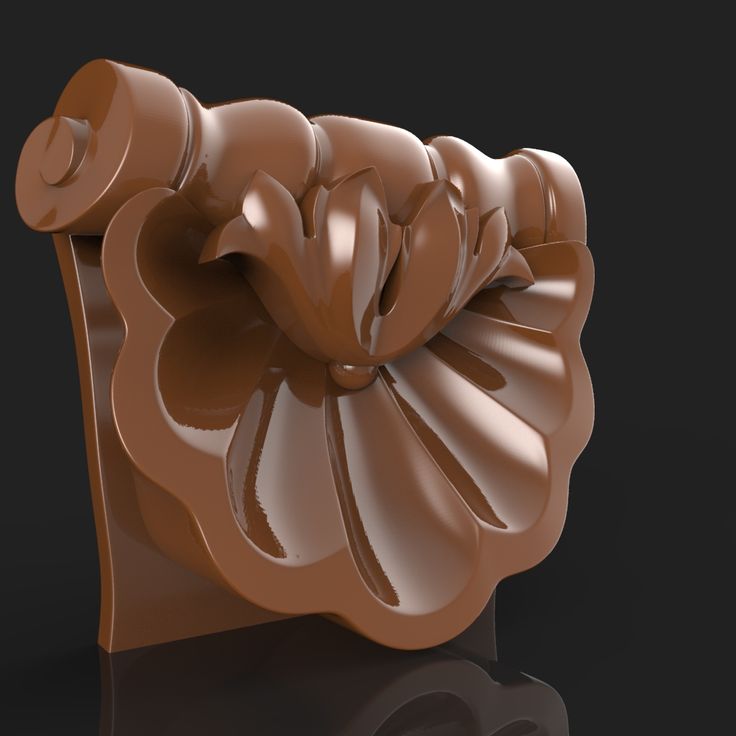 An elegant instrument...for a more civilized age.
An elegant instrument...for a more civilized age.
The flat file is one of the simplest yet most effective tools for effectively removing support structures and sanding surfaces. By holding it firmly in your hand, you can remove marks with greater precision than with a rotary tool. Keep a wire brush handy and clean the file blade regularly (otherwise plastic and resin can get stuck in it). Like a rotary tool, a flat file leaves a rough surface, so it is best used for removing large imperfections.
Sandpaper
Sandpaper is the ugliest tool in the workshop. Over the past decade, it has made a real breakthrough with the release of flexible sanding sheets. Flexible sanding sheets can be purchased at hardware stores. They last 15 times longer than paper ones. They won't curl, puncture or bend, and can be used wet to reduce dust and prevent build-up. Thanks to their flexibility, they easily reach small interior spaces and rounded surfaces.
Dust removal
Even after grinding with a damp tool, a small amount of dust remains.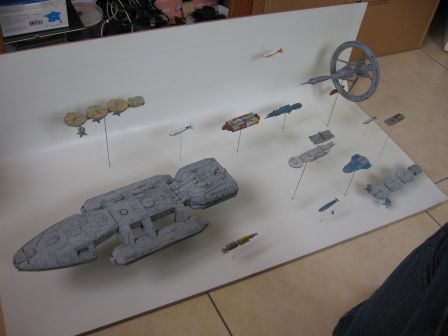 Remove plaque with water and a soft brush (an old toothbrush is fine for this purpose). For serious cleaning, you can take an inexpensive ultrasonic device that will quickly remove small particles trapped in corners and surface cracks. If you are working in a hard water area, using deionized or distilled water will help prevent blemishes between coats.
Remove plaque with water and a soft brush (an old toothbrush is fine for this purpose). For serious cleaning, you can take an inexpensive ultrasonic device that will quickly remove small particles trapped in corners and surface cracks. If you are working in a hard water area, using deionized or distilled water will help prevent blemishes between coats.
Dust cloth
Dust cloth is a piece of soft and slightly tacky cotton cloth designed to remove residual dust and provide a clean surface for painting. Let your model dry before using the dust cloth: the waxed surface reduces its effectiveness on wet surfaces.
Block, pins and drill
This little trick will keep you out of trouble in the paint booth (we were thrilled when we saw this technique in Adam Savage's how-to video). By mounting the model on a pin (you can often use a pre-drilled hole in the part), you can quickly maneuver while spraying and paint the model from all sides, penetrating hard-to-reach places and leaving no fingerprints.